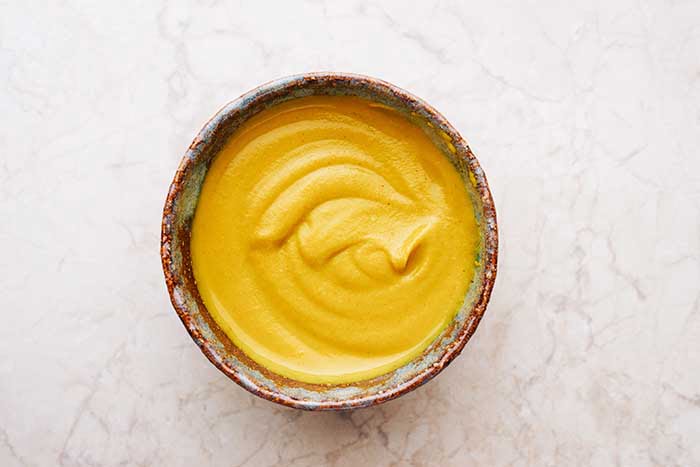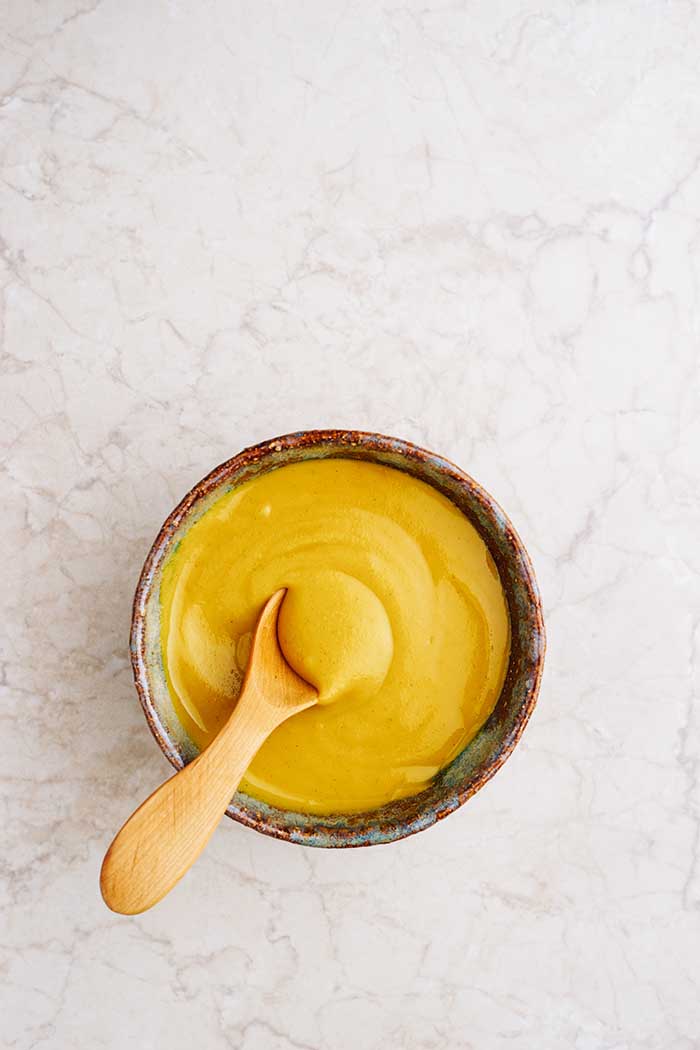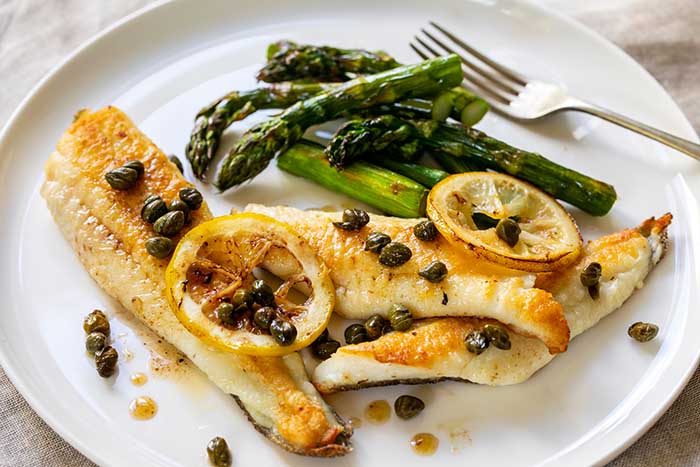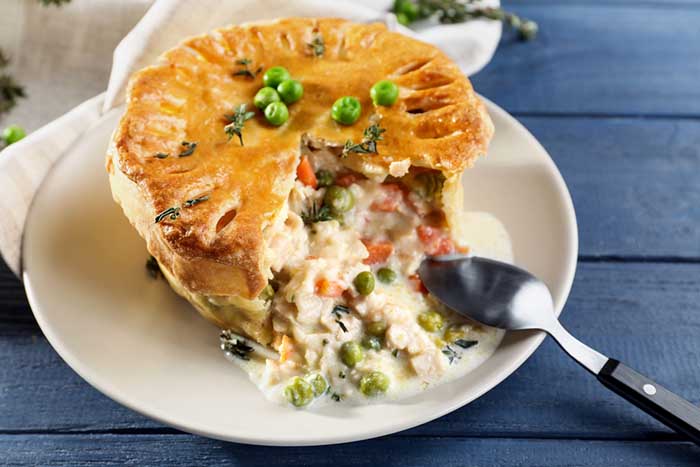Learn how to make Dijon mustard from scratch with our quick and easy recipe. Made with mustard seeds, garlic powder, onion and more, there’s plenty of punch in this homemade condiment!

If you find that store-bought mustards are either too weak or too strong for your own tastes, then why not try making your own? This homemade dijon mustard recipe is a great starting point for making more condiments, like ketchup or sriracha.
The great thing about sauce and condiment recipes like this is that you tweak them in line with your personal preferences. For this mustard recipe, you can make it as mild or strong as you like by tweaking the amount of mustard seed you add.
That said, this recipe should create a good ‘base level’ solution for most people. If you would like it to be sweeter, add a tablespoon of honey.

What is Dijon mustard?
Dijon mustard is originally from the town of Dijon, found in Burgundy in central France. While not the only type of mustard from France, it’s perhaps the most popular and has a lot of admirers abroad.
Dijon mustard can be used as both a condiment and an ingredient. In most cases, it is incorporated into vinaigrettes. The two key ingredients are white wine vinegar and unrefined brown-mustard seed, which both give the condiment its unique flavor.
It has a pale yellow color as well as a creamy consistency. It has a tangy and sharp taste, making it an excellent ingredient for vinaigrettes and adding a kick to sauces. It gets its distinctive taste from white wine.
What does Dijon mustard taste like?
Dijon mustard has a sharp and tangy flavor with a touch of spice. This means that it’s often stronger than more mild equivalents, such as wholegrain or Bavarian mustard. This strong taste means that it can only be enjoyed in moderation, but it makes it perfect as a sandwich filling, or as an ingredient in a salad vinaigrette. It’s also used to make Dijonnaise, which is a simple blend of mayonnaise and Dijon.
If you’ve ever had wasabi paste, the taste in Dijon is not too dissimilar. In fact, wasabi can often be used as a good mustard substitute for this reason.
Dijon mustard vs. yellow mustard
Yellow mustard is different because it has turmeric added to it to give it a bright yellow color. Dijon mustard has a more pale color. And also, the two differ in taste. Yellow mustard is not as spicy as Dijon mustard, which also has a sharper and tangier taste. Yellow mustard is milder. However, you can still substitute one for the other, using a 1 to 1 ratio. The flavors will differ slightly.
Dijon mustard vs. honey mustard
One of the most significant differences between the two is taste. Honey mustard has a sweet taste, while Dijon mustard has a spicy and tangy taste. Therefore honey mustard is not as hot as other mustard varieties, in particular Dijon mustard. However, not all sharpness is lost on honey mustard because there is still some mustard in there. Honey mustard works great when you need a hint of sweetness, perhaps in a salad or as a spread on bread.
What are the benefits of homemade mustard?
The major upside that comes with making anything yourself is knowing what has gone into it. So if you have certain dietary preferences, you can tweak these. You can either adjust the ingredients themselves or the quantities. You can make just the right amount that you anticipate you will need. Also, when you make your mustard, there aren’t any surprises and no added preservatives or sulfites.
The other benefit is that you can always have fresh mustard since you can make it when you want it. Also, it is a much more affordable option. It is cheaper to make than to buy. When you learn to make your own, you will not need to worry about the availability of your favorite mustard at your local supermarket.
When it comes to preservation, you will not need to worry too much. Even though homemade mustard will not have preservatives or other chemicals, the shelf life is still the same.
Ingredients
The core ingredients in traditional Dijon mustard are white wine vinegar, stone-ground or coarse-ground mustard seed, salt, and a large amount of dry white wine.
For our recipe, we’ll be making up for the shorter fermenting period by adding onion, garlic powder, and dry mustard. All of these combine to give the sauce a bit more kick.
Whole yellow mustard seeds
While you can use whole yellow seeds, it is also acceptable to use both brown and yellow mustard seeds.
You can also use black seeds, which are the hottest on the spectrum of mustard seeds. It depends on how much heat you want. Brown seeds are generally hotter and so be careful with these.
Dry mustard
Intensifies the mustard flavor.
White wine
Addstartness. It is used to come up with a smoother consistency. The amount of wine you add will determine how smooth the final mixture will be. Look for any dry white wine for this recipe. If you don’t want to use alcohol, you could use water, but this will change the taste of the mustard, making it blander.
White wine vinegar
Contributes to the tart taste that Dijon mustard is infamous for. You can also use lemon juice in place of white wine vinegar. The acidity of vinegar helps the mustard maintain its bite for a longer period than when you use a less acidic liquid.
Garlic powder
Adds more flavor to the mustard also helps to thicken it.
Time
This recipe is easy but it is demanding on time. Active cooking or prep time is only about 30 – 40 minutes in total, however it will need two days to rest in your refrigerator to allow the ingredients to blend and rise to that iconic Dijon taste.
Storage
It can last for up to about six months to a year when it is in the fridge. This is highly dependent on the ingredients used.
How to thicken
Your mustard could be watery because of the liquid ingredients will and also lack of patience. There’s a lot of stirring that needs to be done for the mustard to be the right consistency. You should do about 45 minutes worth of stirring. Also, you must soak the mustard seeds for long enough if they will swell up and make the right consistency of mustard.
Grind the seeds long enough before you start adding the vinegar and the white wine. You want to make sure that you do this when you have now been able to come up with a paste from the ground seeds, and you begin to see the yellow mustard color.
How to thin
You can add a little extra liquid, depending on what you use. Add a little at a time to avoid adding too much at a time. Add
the liquid in as you blend.
How to make the flavor stronger
You can make it stronger by adding a bit of salt, which knocks up the spiciness and makes it flavorful. Black mustard seeds are hotter, so use those for maximum impact.
What goes with Dijon mustard?
There are many different ways to use Dijon mustard. These are some of them:
Salad dressing
You can use Dijon mustard to dress your salads. It has a spicy kick to it and a tangy taste which is excellent for many salads. The thick consistency helps incorporate the oil and vinegar. It works exceptionally well with greens that have a bit of a bitter after taste like escarole. You can also have it with the creamier type of salads like potato salad.
Meat glaze
All types of yellow and Dijon mustard work well as a glaze, creating an additional dimension of flavor. Try it on your next whole ham.
Marinade
Due to its intense flavor, Dijon is a perfect addition to so many marinade recipes. Try it when preparing grilled chicken and leave it to marinate for three or four hours in the refrigerator.
Meat rub
You can rub it over meats such as pork roast. It will give you a thick crust of goodness and a spicy kick. You can also use it on chicken.
You can also use it as a substitute for whole mustard in a recipe like a riesling sauce for ham.

Homemade Dijon Mustard
Ingredients
- 1 cup whole yellow mustard seeds
- ¼ cup dry mustard
- 1 ½ cups white wine
- ⅔ cup white wine vinegar
- 1 yellow onion chopped
- 2 cloves garlic minced
- 1 cup water or more as needed
- 1 tbsp garlic powder
- 1 tsp salt
Instructions
- Combine the white wine, white wine vinegar, garlic and water in a saucepan, and let it simmer for 10-15 minutes. Allow the mix to cool to room temperature before straining into a bowl.
- Stir in the dry mustard, mustard seeds, salt and garlic powder into the strained liquid, before covering and letting it thicken for 1-2 days.
- Puree the mix with an immersion blender until it reaches your desired consistency.
- Transfer the mix to a saucepan and add a little more water and bring it to a simmer. Combine while simmering for about 10 minutes.
- Pack the mustard into your choice of jars, allowing about half an inch room at the top. Aim to remove any extra air bubbles from the inside of the jars, using a spoon or knife. Apply the tops of the jars and leave in the refrigerator for about one week. This will let all the flavors blend.


